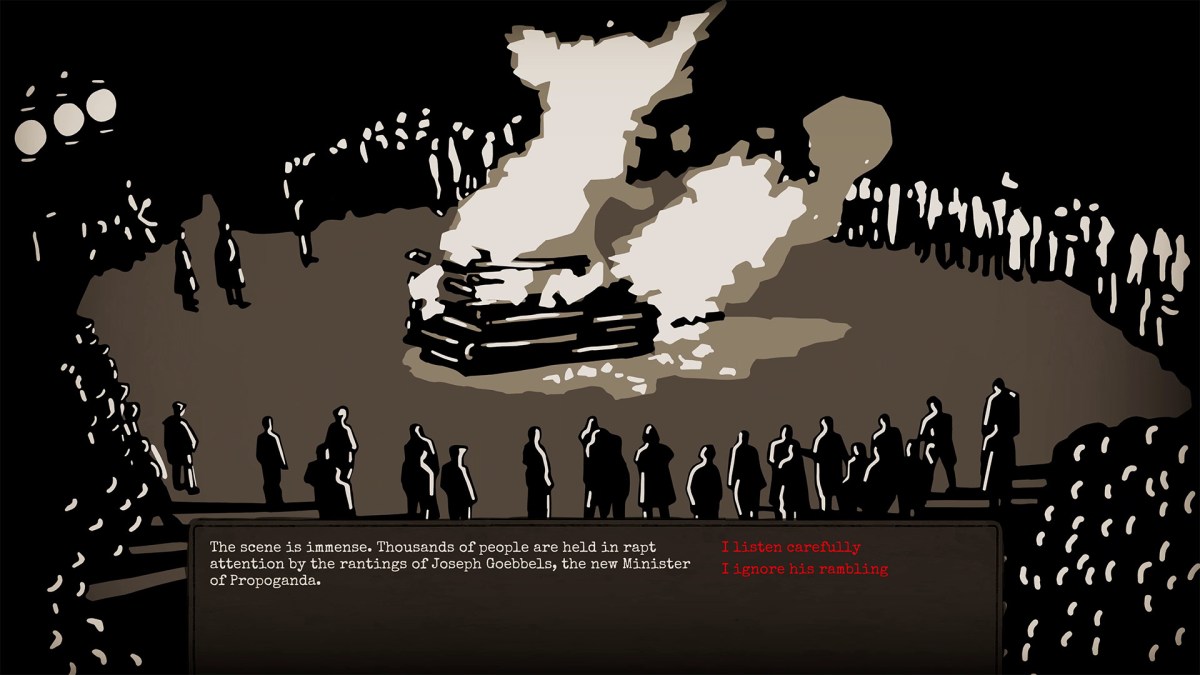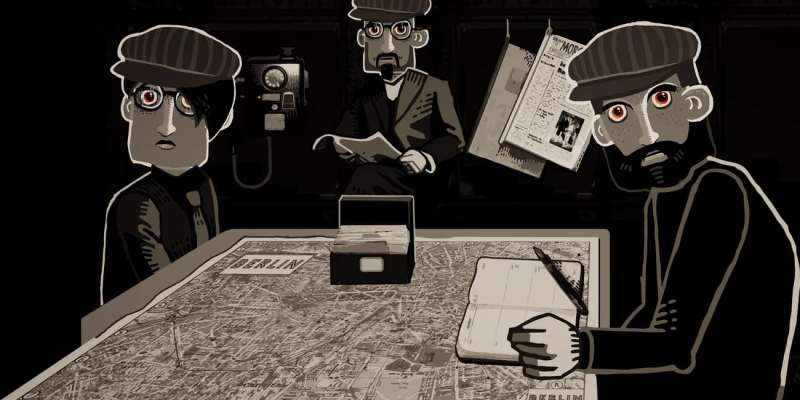Through the Darkest of Times is somber — a grim descent into the everyday lives of Berliners trying to survive and resist Hitler’s Germany. The parallels to This War of Mine as an account of the civilian experience of war are clear, but developer Paintbucket Games has different ambitions. Through the Darkest of Times foregrounds the development of the Third Reich to create an engaging piece of historical fiction, even though the gameplay is a little disappointing.
Beginning when Hitler became German Chancellor in 1933 and concluding with the end of World War II, the game is divided into four eras covering the rise, peak, and collapse of Nazi rule. This same story of propaganda, indoctrination, cruelty, and genocide has been told countless times in countless ways, but it remains compelling here. Few, if any, other games have ever offered such a mature, detailed take on how the war came to be. This story is told primarily through newspaper leads that share what was occurring in Germany and sometimes wider Europe in each week that the player spends in control.
If that were all the narrative the game contained, it would be educational, but not particularly interesting. Therefore, Paintbucket Games has made things personal. Players take control of a Berliner involved with the resistance, following the stories of their neighbors and friends. The individual segments sometimes feel random and disconnected from one another, but recurring characters and occasional references to past events create a sense of continuity. Within these narrative segments, players decide how they react to the events around them. Disappointingly, these choices seem to matter little. While that may be attributable to a desire for historical accuracy on the part of the developers, the events and choices themselves are usually so insignificant that incongruous details would have no chance of derailing the course of history.
While this text-driven, choice-infused storytelling is vital to Through the Darkest of Times, the core gameplay is based in strategy norms. Across the 20 or so weeks that compose each era of the Third Reich, players must organize the operations of the underground. Maintaining enough morale, supporter numbers, and funds to survive the era is the only real goal, and doing so is relatively simple, even in the more difficult Resistance Mode. It involves sending resistance members on missions such as meeting with community leaders, collecting money, and engaging in subversive activities.
Most missions contain dangers, but these can be mitigated by being careful about selecting participants and providing them with resources that may increase the odds of success. Bolder players can also challenge themselves to take on tougher missions, including bombings and contacting the Allies or Soviet Army. However, the difficulties in acquiring the necessary resources for these missions and the sometimes unclear chains to unlock them make for a tiresome experience rather than a rewarding one, particularly as the only goal is to survive. No missions are necessary to forward the story, so progression comes purely from attrition. The game is short enough to avoid becoming boring, but few players are likely to be inspired enough to start a second playthrough, even with the possibility of altering history.

More positively, the game is bolstered by an impressive audiovisual presentation. Realism in graphics is the last thing on the minds of Paintbucket Games, with the developers instead using a borderline grotesque aesthetic married to an almost monochromatic color palette. The bleak grays capture a sense of hopelessness and helplessness. The gaudy red of flames and Nazi imagery shoot through the moody scenes with a stark, memorable effect. The pervasive misery carries through the audioscape with its downbeat tones and sad voiceovers. Ambient sounds are used infrequently, but when they are, they come muted and distorted, as though echoing down a long tunnel. The real world feels a step removed from this savage land.
World War II may be a remnant of the distant past now, but its lessons remain as pertinent as ever. Through the Darkest of Times captures them more powerfully than any game in the past, demonstrating the slow encroachment and elimination of human rights, the intense nationalism that enabled Hitler’s rise, and the blind fanaticism that drove his followers. Implicit references to phrases that have become commonplace in today’s media climate drive those lessons home. It is a fascinating game, absolutely essential for anyone looking for an engaging take on both the background and lived experience of the most devastating war in human history.
